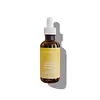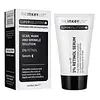What's inside
What's inside
 Key Ingredients
Key Ingredients

 Benefits
Benefits

 Concerns
Concerns

 Ingredients Side-by-side
Ingredients Side-by-side

Aloe Barbadensis Leaf Juice
Skin ConditioningGlycerin
HumectantRosa Damascena Flower Water
MaskingTriethanolamine
BufferingSorbitol
HumectantLecithin
EmollientTocopheryl Acetate
AntioxidantGlyceryl Linoleate
EmollientGlyceryl Linolenate
EmollientRetinyl Palmitate
Skin ConditioningSodium Ascorbyl Phosphate
AntioxidantXanthan Gum
EmulsifyingSodium Hyaluronate
HumectantPullulan
Terminalia Ferdinandiana Fruit Extract
AntioxidantCentipeda Cunninghamii Extract
Skin ConditioningCalanthe Discolor Extract
Skin ConditioningCalcium Gluconate
HumectantAscorbic Acid
AntioxidantTetrasodium EDTA
Ferulic Acid
AntimicrobialVaccinium Myrtillus Fruit/Leaf Extract
AstringentHelianthus Annuus Seed Extract
Skin ConditioningLeptospermum Scoparium Branch/Leaf Oil
TonicGluconolactone
Skin ConditioningSodium Benzoate
MaskingPhenoxyethanol
PreservativeAloe Barbadensis Leaf Juice, Glycerin, Rosa Damascena Flower Water, Triethanolamine, Sorbitol, Lecithin, Tocopheryl Acetate, Glyceryl Linoleate, Glyceryl Linolenate, Retinyl Palmitate, Sodium Ascorbyl Phosphate, Xanthan Gum, Sodium Hyaluronate, Pullulan, Terminalia Ferdinandiana Fruit Extract, Centipeda Cunninghamii Extract, Calanthe Discolor Extract, Calcium Gluconate, Ascorbic Acid, Tetrasodium EDTA, Ferulic Acid, Vaccinium Myrtillus Fruit/Leaf Extract, Helianthus Annuus Seed Extract, Leptospermum Scoparium Branch/Leaf Oil, Gluconolactone, Sodium Benzoate, Phenoxyethanol
Water
Skin ConditioningGlycerin
HumectantPrunus Armeniaca Kernel Oil
MaskingPersea Gratissima Oil
Skin ConditioningCaprylic/Capric Triglyceride
MaskingSqualane
EmollientCetearyl Alcohol
EmollientGlyceryl Stearate Se
EmulsifyingRetinol
Skin ConditioningPhenoxyethanol
PreservativeHydroxyethyl Acrylate/Sodium Acryloyldimethyl Taurate Copolymer
Emulsion StabilisingBenzyl Alcohol
PerfumingPhospholipids
Skin ConditioningTocopherol
AntioxidantPolyacrylate Crosspolymer-6
Emulsion StabilisingGlycine Soja Oil
EmollientEthylhexylglycerin
Skin ConditioningGlycolipids
Skin ConditioningDehydroacetic Acid
PreservativePolysorbate 60
EmulsifyingSorbitan Isostearate
EmulsifyingTrisodium Ethylenediamine Disuccinate
Glycine Soja Sterols
EmollientT-Butyl Alcohol
PerfumingWater, Glycerin, Prunus Armeniaca Kernel Oil, Persea Gratissima Oil, Caprylic/Capric Triglyceride, Squalane, Cetearyl Alcohol, Glyceryl Stearate Se, Retinol, Phenoxyethanol, Hydroxyethyl Acrylate/Sodium Acryloyldimethyl Taurate Copolymer, Benzyl Alcohol, Phospholipids, Tocopherol, Polyacrylate Crosspolymer-6, Glycine Soja Oil, Ethylhexylglycerin, Glycolipids, Dehydroacetic Acid, Polysorbate 60, Sorbitan Isostearate, Trisodium Ethylenediamine Disuccinate, Glycine Soja Sterols, T-Butyl Alcohol
Ingredients Explained
These ingredients are found in both products.
Ingredients higher up in an ingredient list are typically present in a larger amount.
Glycerin is already naturally found in your skin. It helps moisturize and protect your skin.
A study from 2016 found glycerin to be more effective as a humectant than AHAs and hyaluronic acid.
As a humectant, it helps the skin stay hydrated by pulling moisture to your skin. The low molecular weight of glycerin allows it to pull moisture into the deeper layers of your skin.
Hydrated skin improves your skin barrier; Your skin barrier helps protect against irritants and bacteria.
Glycerin has also been found to have antimicrobial and antiviral properties. Due to these properties, glycerin is often used in wound and burn treatments.
In cosmetics, glycerin is usually derived from plants such as soybean or palm. However, it can also be sourced from animals, such as tallow or animal fat.
This ingredient is organic, colorless, odorless, and non-toxic.
Glycerin is the name for this ingredient in American English. British English uses Glycerol/Glycerine.
Learn more about GlycerinPhenoxyethanol is a preservative that has germicide, antimicrobial, and aromatic properties. Studies show that phenoxyethanol can prevent microbial growth. By itself, it has a scent that is similar to that of a rose.
It's often used in formulations along with Caprylyl Glycol to preserve the shelf life of products.